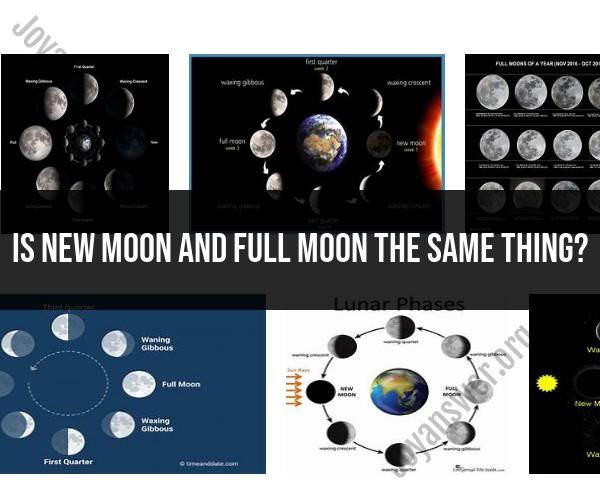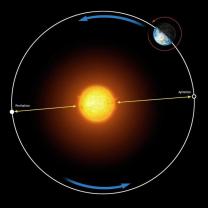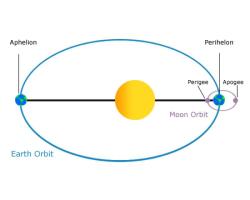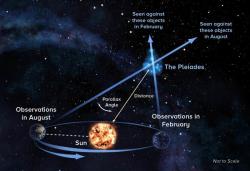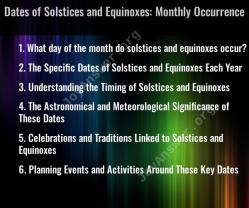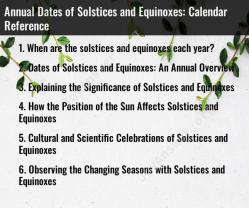Is new moon and full moon the same thing?
Lunar phases refer to the changing appearance of the Moon as it orbits the Earth. The most well-known lunar phases are the New Moon and the Full Moon. These phases represent opposite ends of the lunar cycle and are characterized by distinct appearances in the night sky. Here's how to distinguish between the New Moon and the Full Moon:
New Moon:
- The New Moon phase occurs when the Moon is positioned between the Earth and the Sun. During this phase, the side of the Moon illuminated by the Sun is facing away from Earth, making it virtually invisible from our perspective.
- The New Moon is not visible in the night sky because the illuminated side is facing away from us. It rises and sets with the Sun during the day.
- It marks the beginning of the lunar cycle and is associated with the darkest nights.
Full Moon:
- The Full Moon phase occurs when the Moon is on the opposite side of the Earth from the Sun. This means that the side of the Moon illuminated by the Sun is fully facing Earth.
- During a Full Moon, the entire face of the Moon that is visible from Earth is illuminated, giving it a round and bright appearance.
- The Full Moon rises in the east as the Sun sets in the west and is visible throughout the night.
- The Full Moon marks the middle of the lunar cycle and is often associated with increased brightness in the night sky.
Distinguishing Between New Moon and Full Moon:
- Appearance: The New Moon is not visible at all, while the Full Moon appears as a complete circle of light.
- Illumination: During the New Moon, the illuminated side is facing away from Earth, while during the Full Moon, the illuminated side is fully facing Earth.
- Timing: The New Moon rises and sets with the Sun during the day, while the Full Moon rises in the east as the Sun sets in the west.
- Position: The New Moon is positioned between the Earth and the Sun, while the Full Moon is on the opposite side of the Earth from the Sun.
These two phases are fundamental in understanding the lunar cycle and have cultural and symbolic significance in various societies. The cycle of lunar phases repeats approximately every 29.5 days, which is known as a lunar month.
